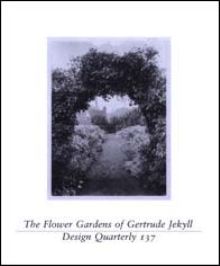The Flower Gardens of Gertrude Jekyll and Their Twentieth-Century Transformations
 Current interest in flowers as a landscape medium has sparked a reexamination of the work of Miss Jekyll. In this article, the landscape architect Michael Van Valkenburgh traces the history of flower gardens, providing background for his discussions of Jekyll’s contributions to that history. A cache of photographs by Jekyll in the University of California, Berkeley Library of the College of Environmental Design inspired the author to write about Jekyll’s use of photography in her work. In these images, made from existing prints (the negatives are unfortunately lost) for reproduction here, one can see how photography became the means through which Jekyll, who was severely myopic, studied the landscape and developed her theories of flower border.
Current interest in flowers as a landscape medium has sparked a reexamination of the work of Miss Jekyll. In this article, the landscape architect Michael Van Valkenburgh traces the history of flower gardens, providing background for his discussions of Jekyll’s contributions to that history. A cache of photographs by Jekyll in the University of California, Berkeley Library of the College of Environmental Design inspired the author to write about Jekyll’s use of photography in her work. In these images, made from existing prints (the negatives are unfortunately lost) for reproduction here, one can see how photography became the means through which Jekyll, who was severely myopic, studied the landscape and developed her theories of flower border.
The architectural historian Judith B. Tankard has identified a number of Jekyll photographs reproduced here and, in addition, has graciously permitted the reproduction of recent color photographs she has made of a number of Jekyll’s surviving gardens. A number of Jekyll’s attitudes about color and form in the garden have been reinterpreted by today’s landscape architects. Some of these transformations of the herbaceous border are discussed here by Van Valkenburgh to demonstrate the ways in which Jekyll continues to influence garden design in the late twentieth century.
— Mildred S. Friedman from the Editor’s Notes
MIT Press for the Walker Art Center, 1987